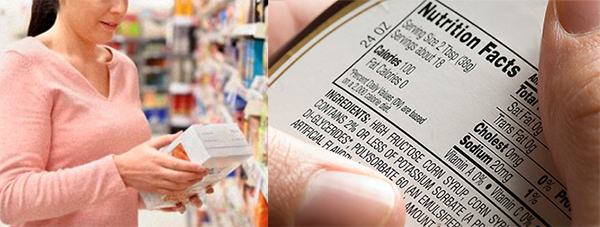Clean packaging/labels for food and beverage products is a hot topic. Consumers certainly have spoken about their desire for simplified ingredient lists and easy to read/comprehend food product packaging. The topic is also generating confusion not only among consumers, but also food and beverage product producers and marketers.
First, it’s a matter of definition. One issue that is complicating the clean label discussion is the fact that there is no regulatory definition of clean label, even though the food industry itself has put forth several options. The “unregulated” definition that is commonly understood by consumers may be the one that matters most to food marketers until regulatory agencies decide to take on the task. For consumers, clean labels are generally understood to mean food products formulated with ingredients that consumers have some familiarity with and that they view as “wholesome”. While this definition provides some guidance for food marketers, it is a somewhat slippery slope. A food brand has to consider its product’s target audience in determining what is “wholesome”. An unwholesome ingredient to one target audience may be perceived as wholesome or maybe even desirable to another target audience, depending on what the product expectations are for each target audience.
Consumers are not the only driving force. While consumers cannot be under-estimated in importance and influence in the clean label discussion, there are other forces driving the discussion. Increased globalization of food and beverage distribution has driven the need to clean up formulations and food labels. Products with uncomplicated ingredient lists are confronted with far less international regulatory hurdles as food producers expand their markets to capitalize on growing global food demands. Progress in food technology, while not necessarily a driver of the clean label trend, has certainly enabled it. Meeting consumer demand for convenient, healthy, great tasting, and safe food products has been advanced by emerging ingredient, processing, and packaging technologies. To stay competitive, food brands have had to evolve with the available technology.
What does this mean for food packaging? The clean label trend affects food and beverage packaging in several ways. First, obviously, is the need to revise the content, copy and visuals, of product packaging to reflect the changes in product formulations, ingredient lists, and nutrition facts. From a branding perspective, packaging design and configuration needs to reflect a clean/transparent approach visually. These are a subtle suggestions through typeface, uncluttered layout, and packaging materials such as front-of-pack windows or transparent packaging materials so that products are visible through the packaging. The role of packaging colors and textures should not be overlooked in their suggestive influence on the definition of wholesome. The clean label trend has generated a new vocabulary of marketing buzz words that have come to be understood by consumers and marketers alike as defining simplified, wholesome products, and this new vocabulary needs to be woven into marketing copy not only on product packaging/labels, but on all other marketing materials and media.






